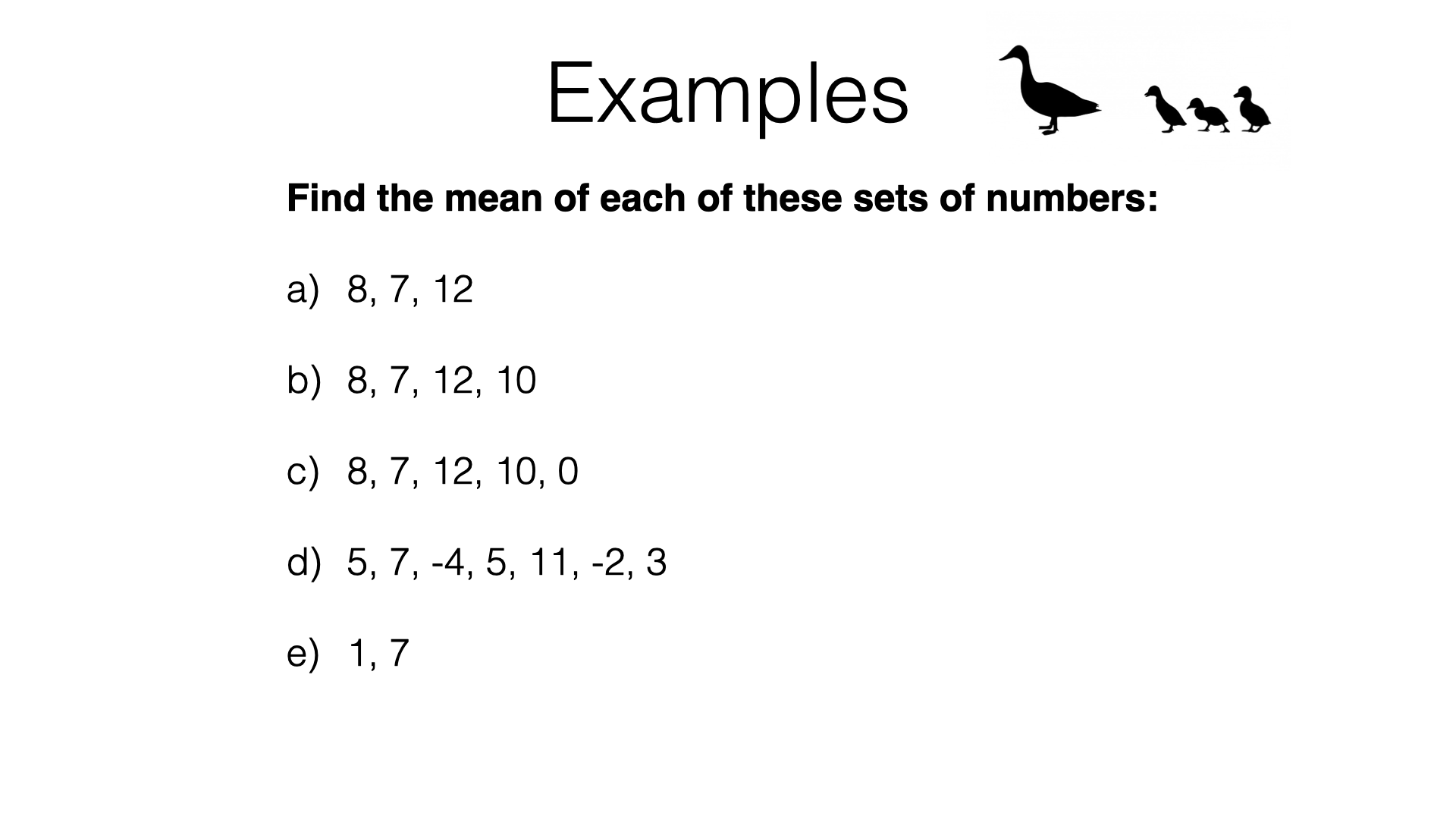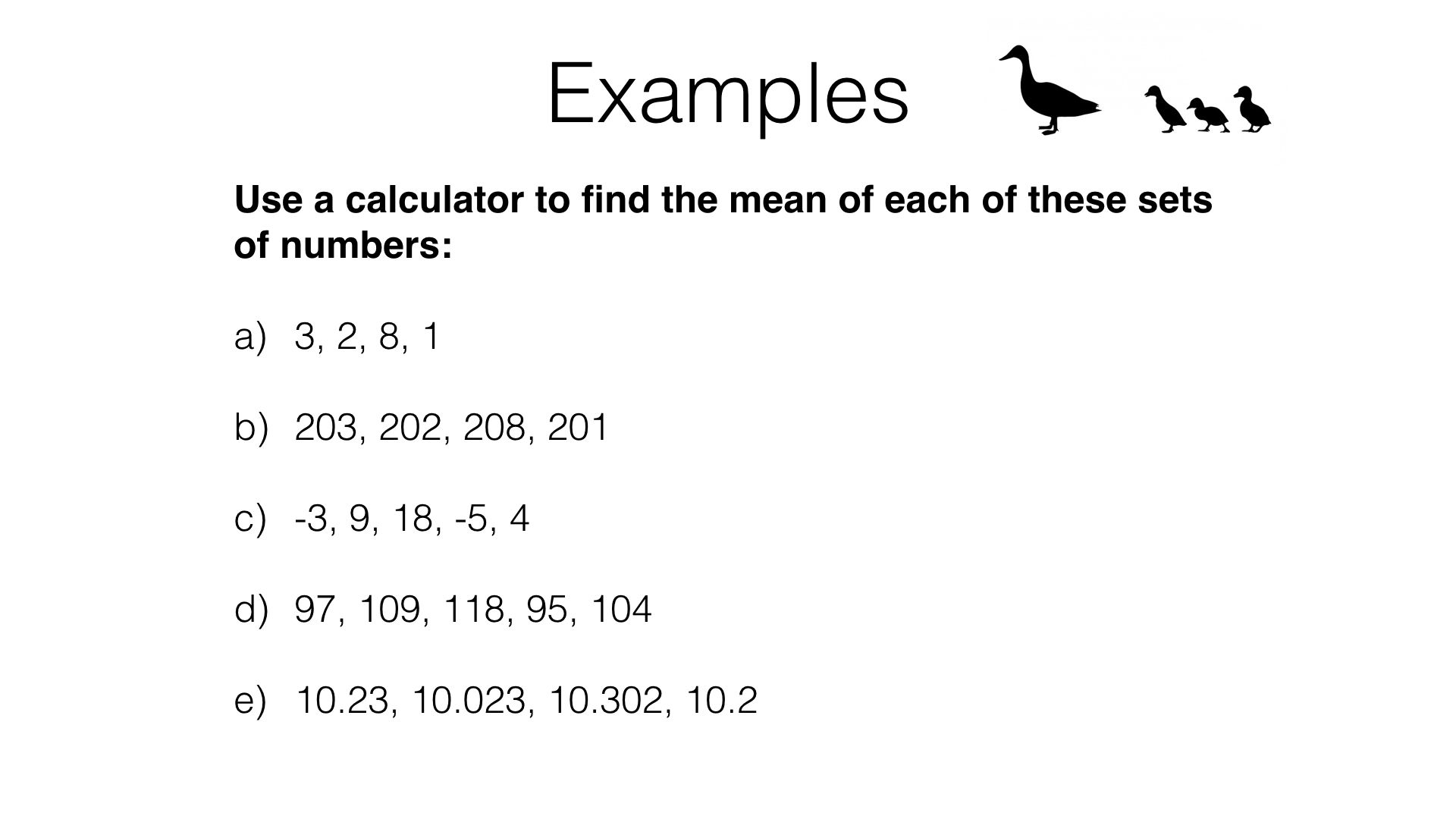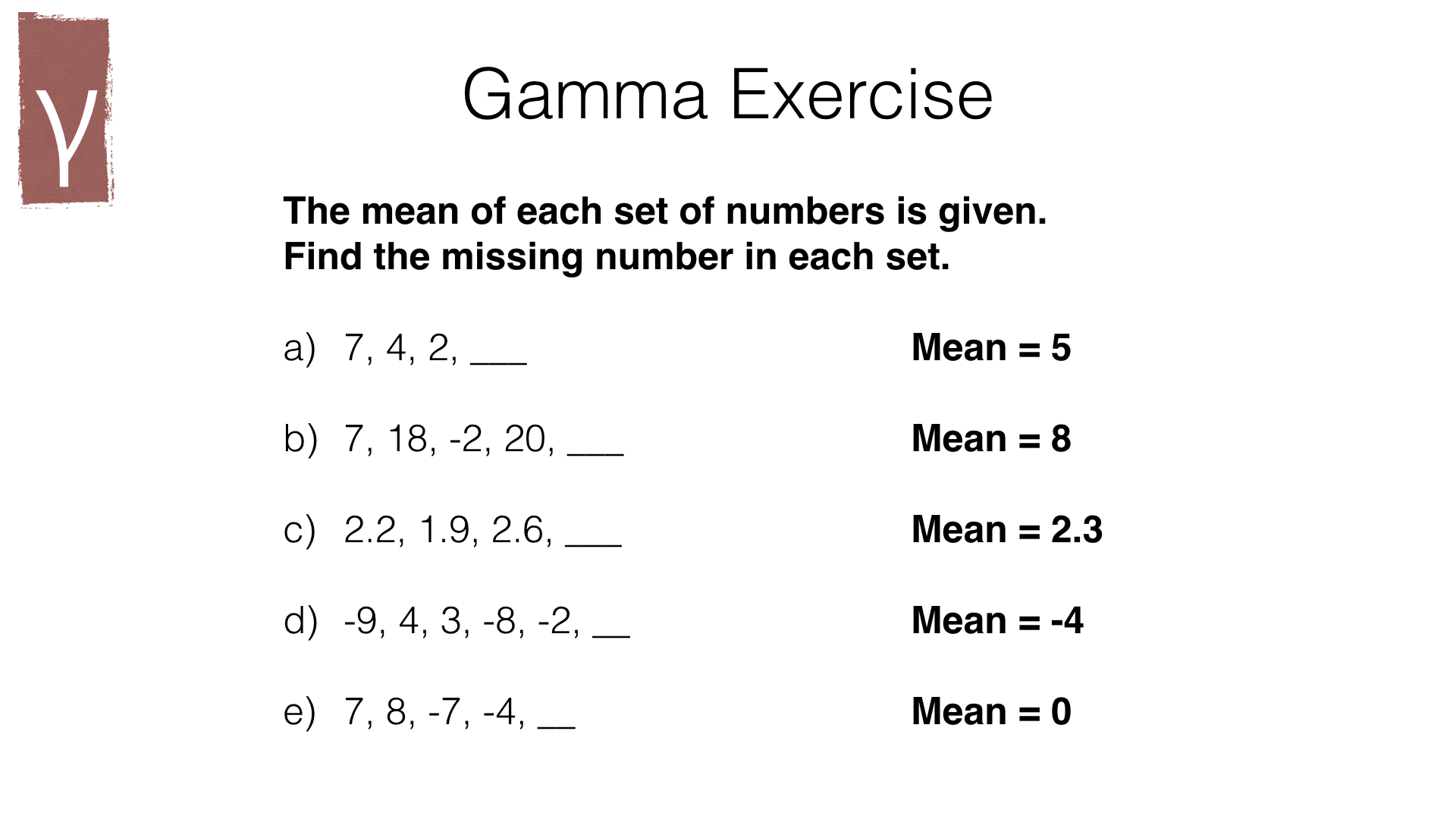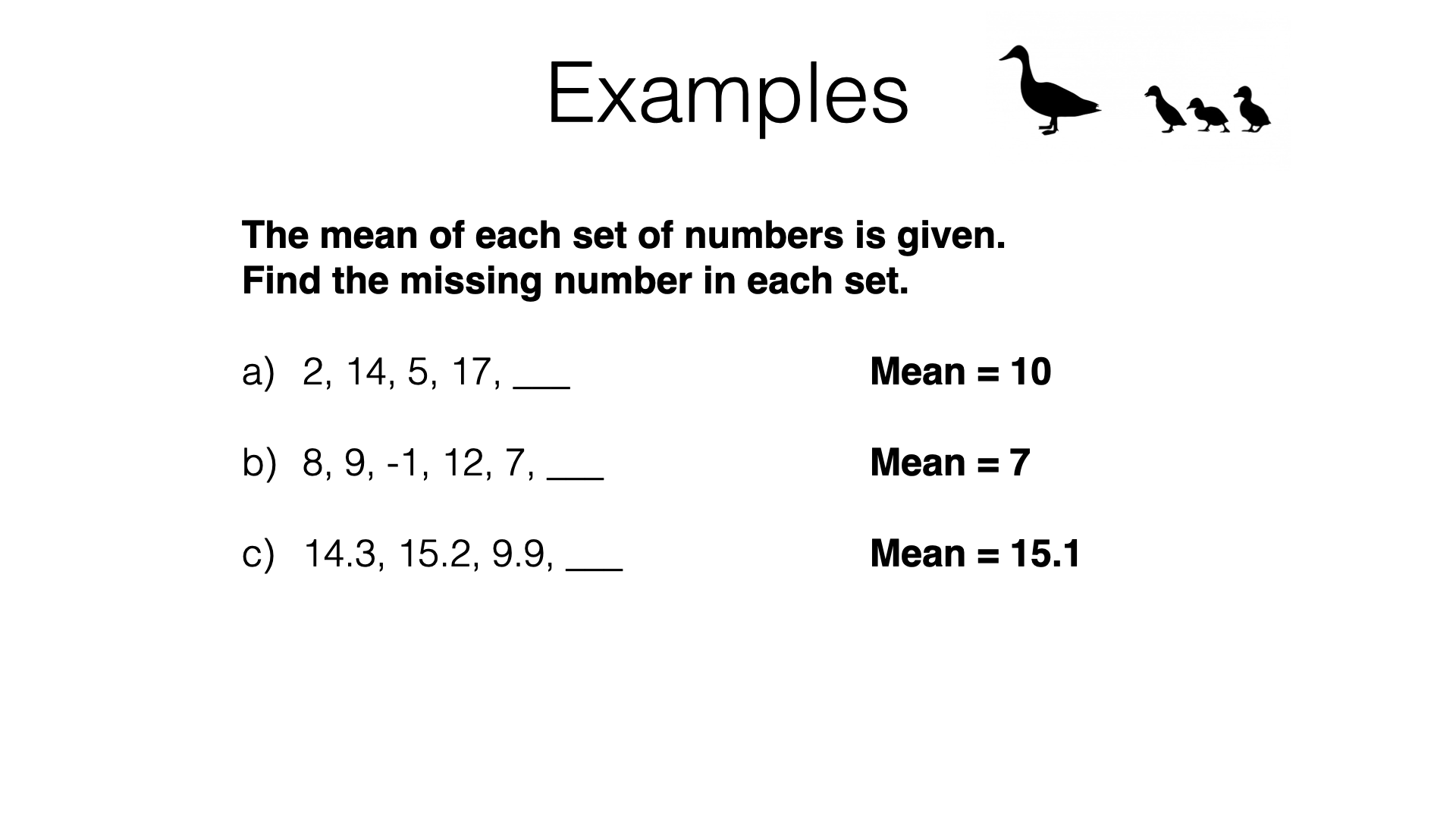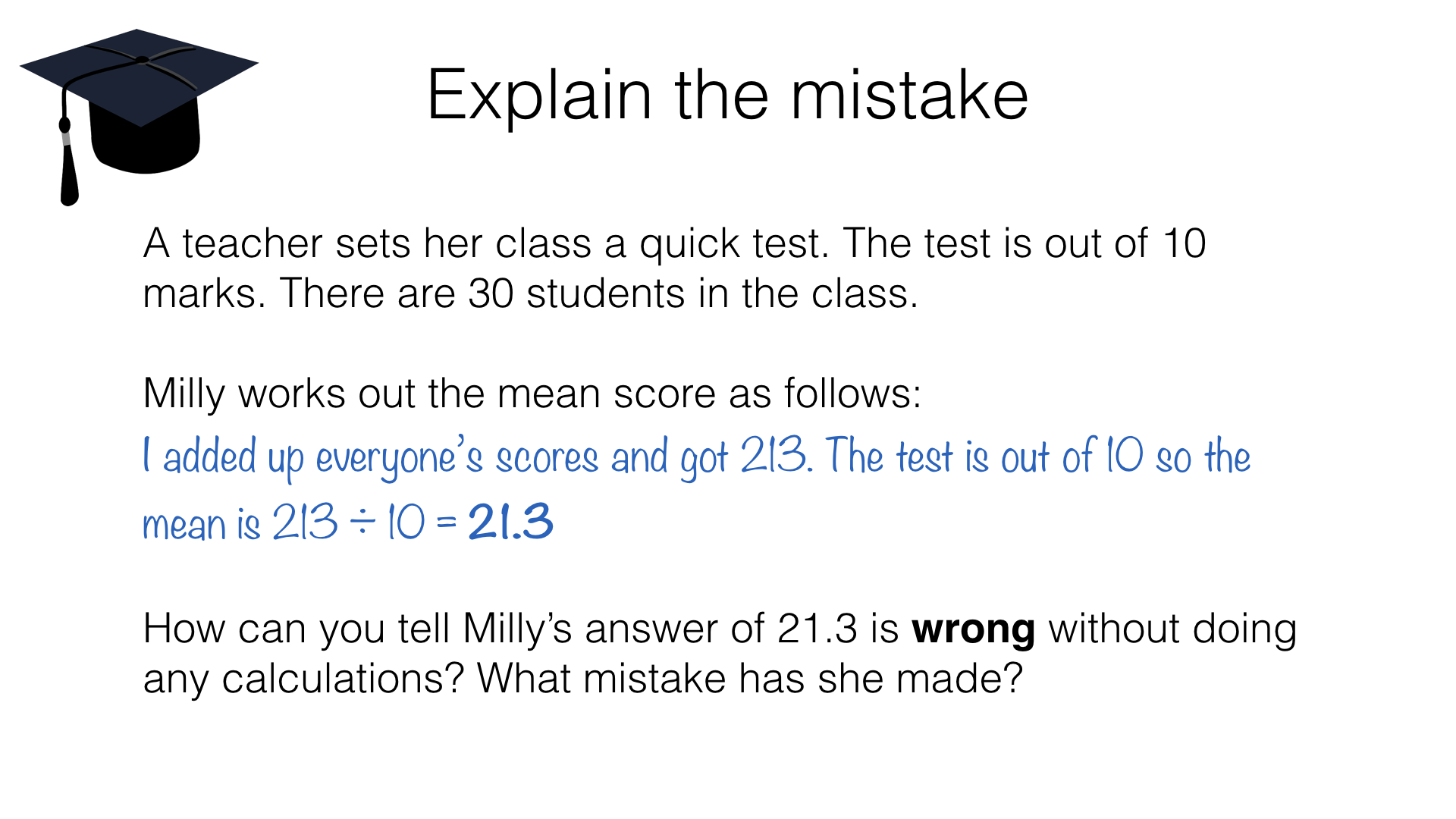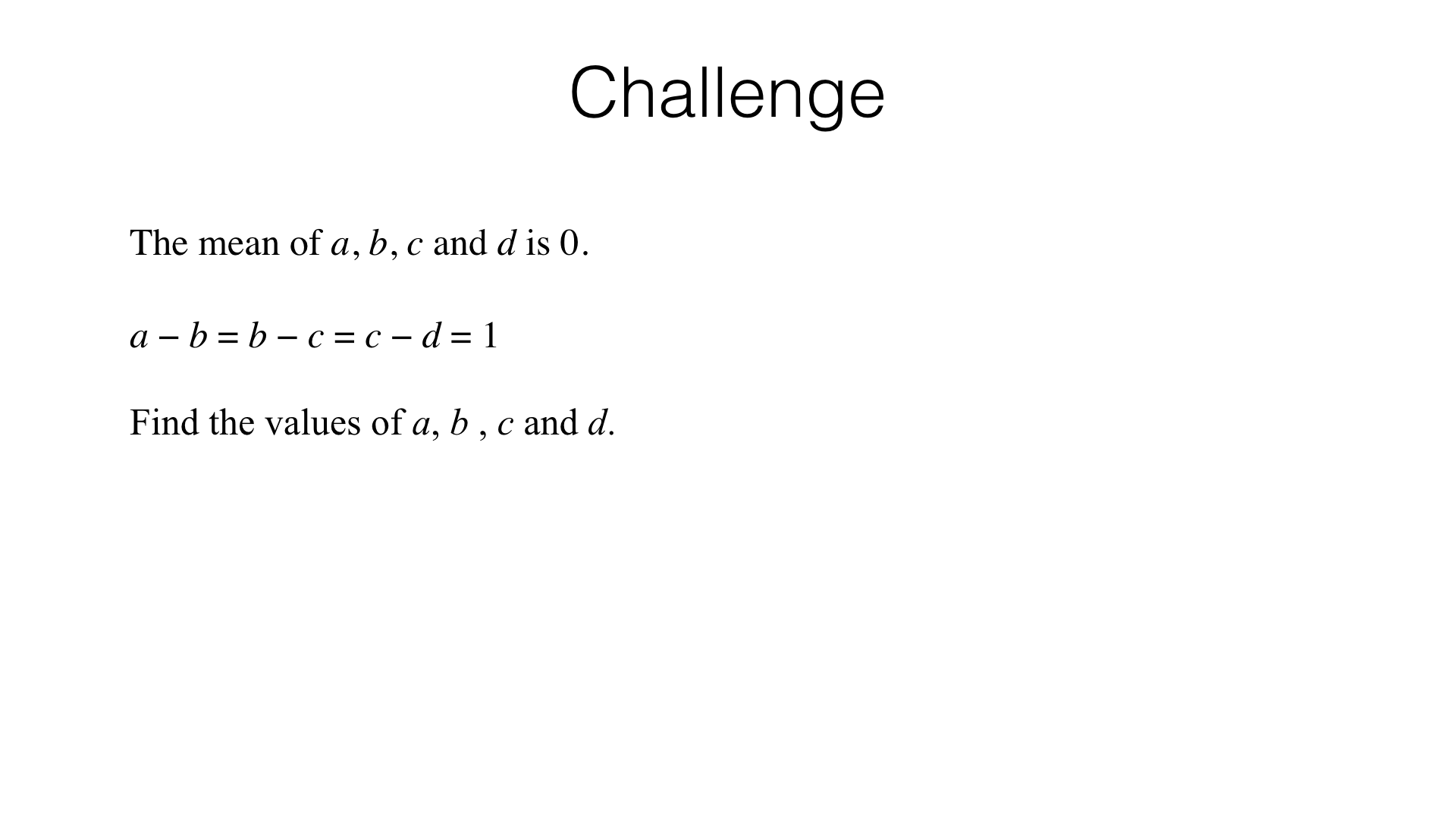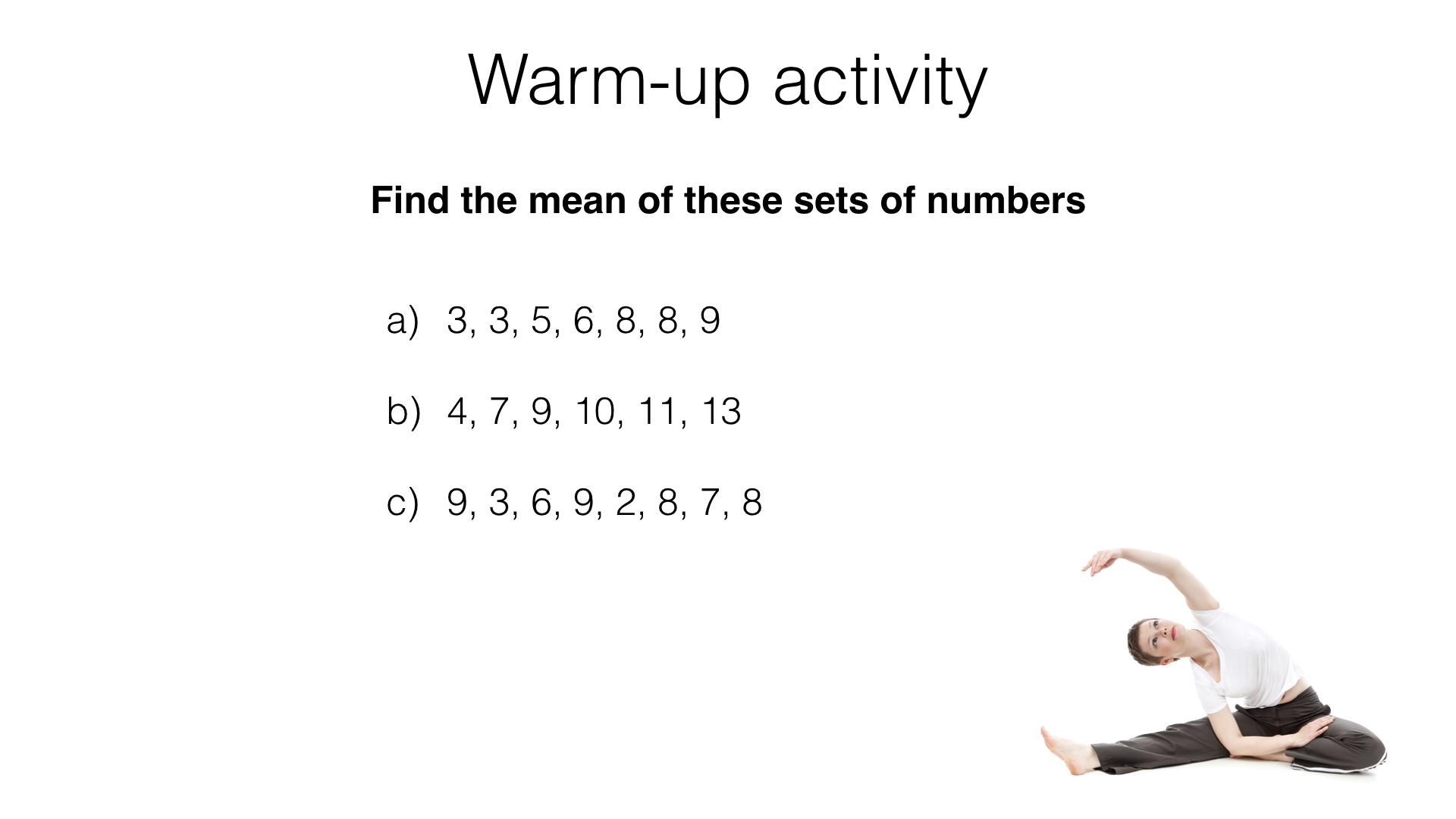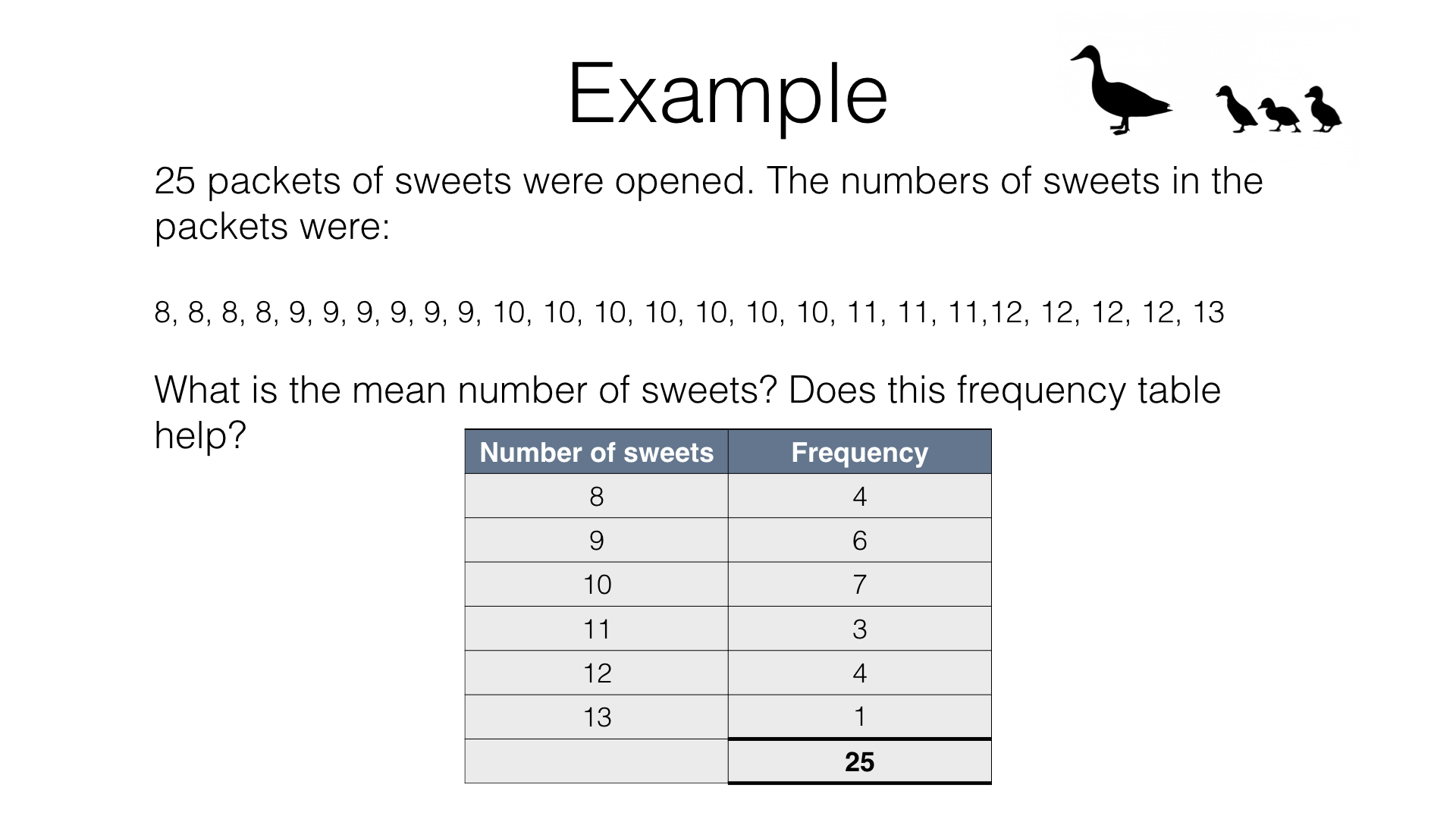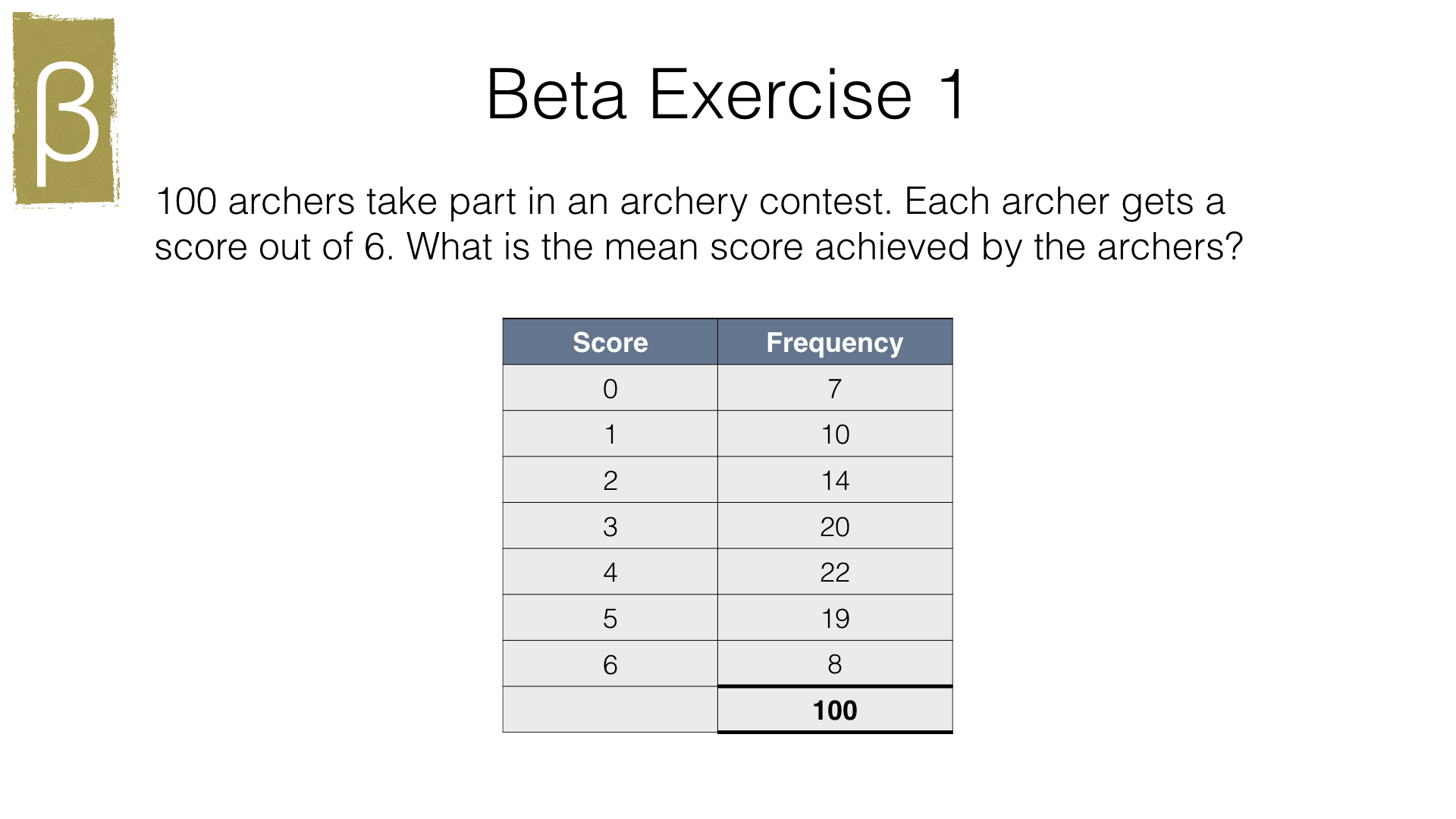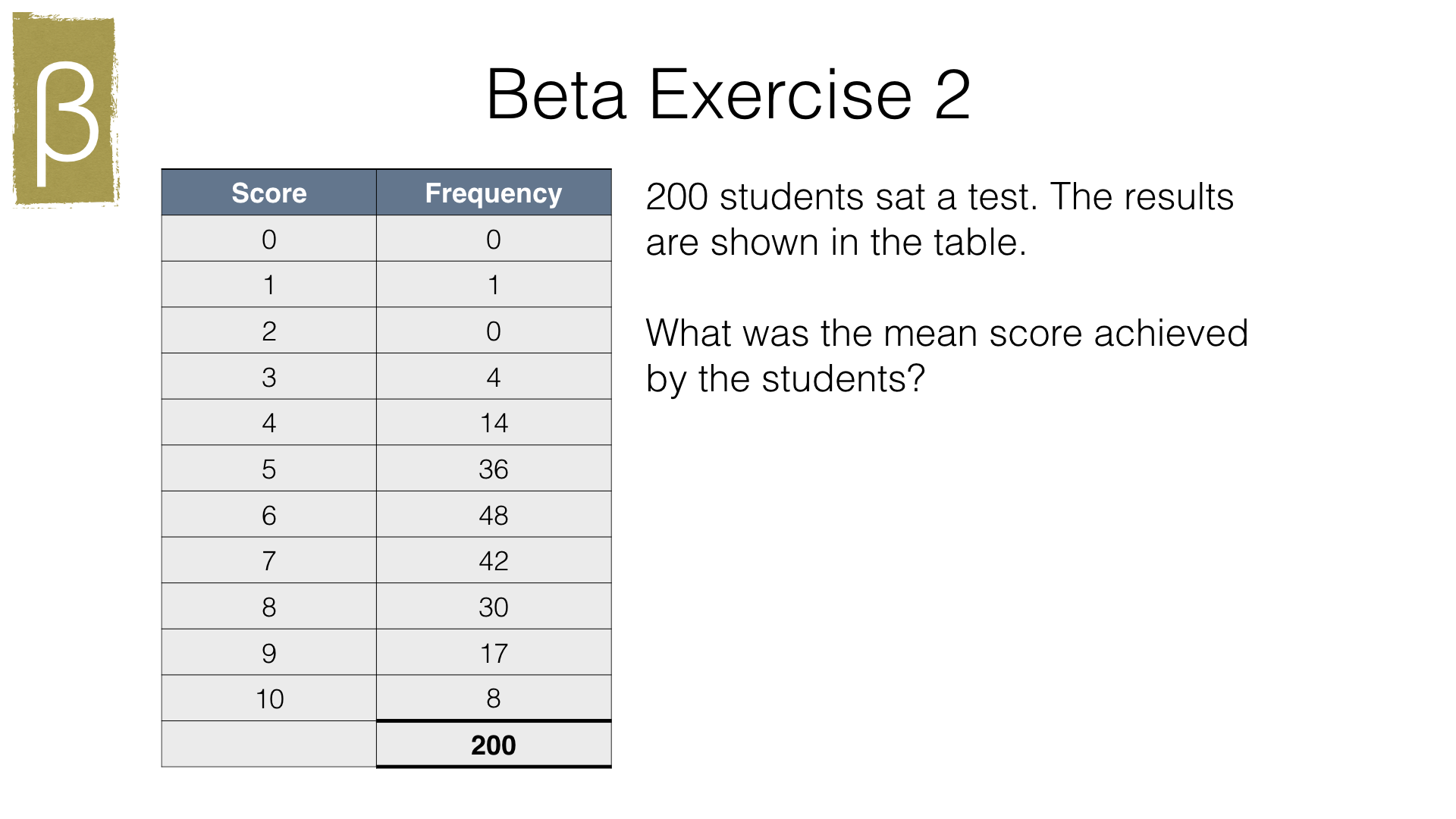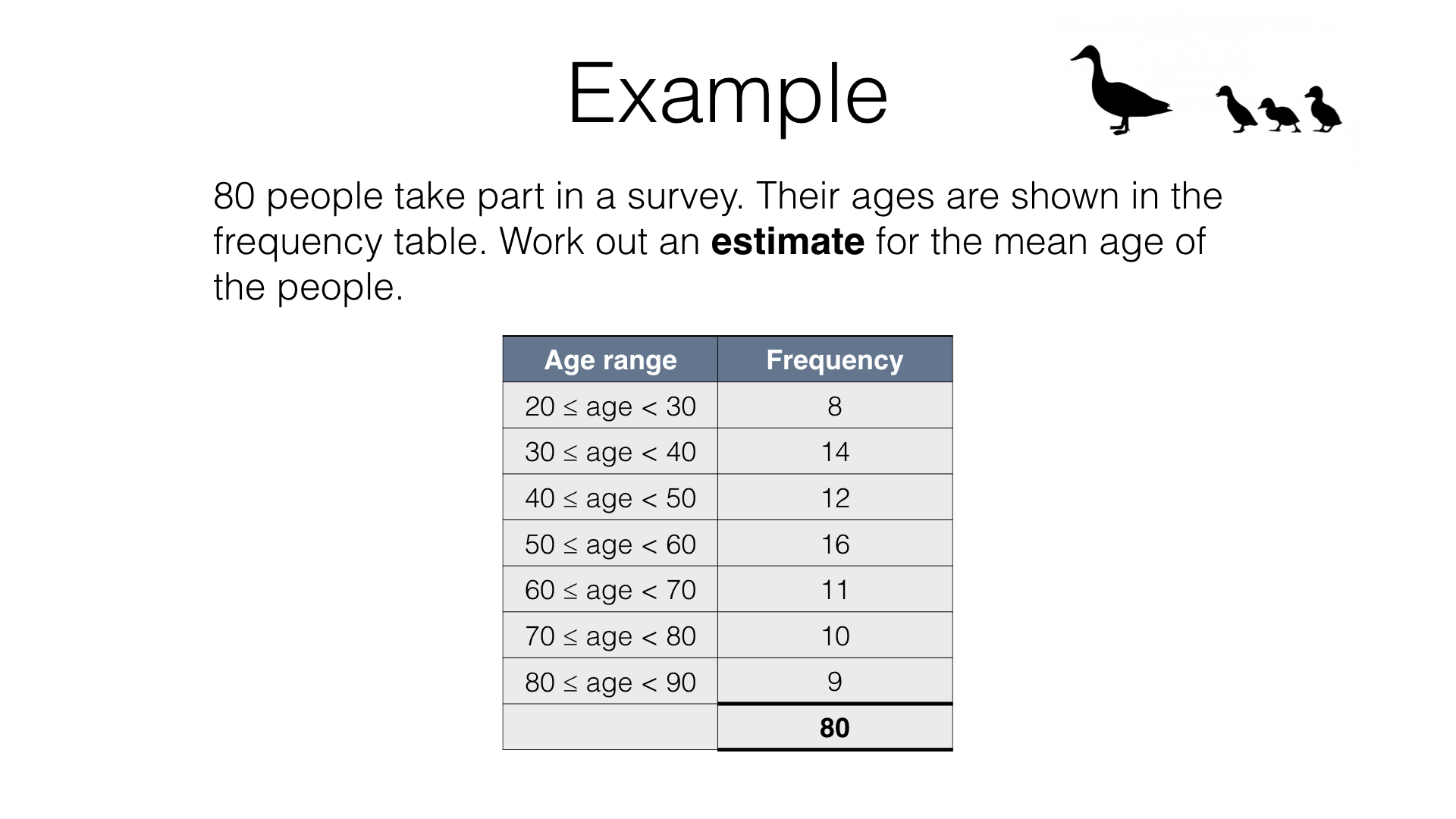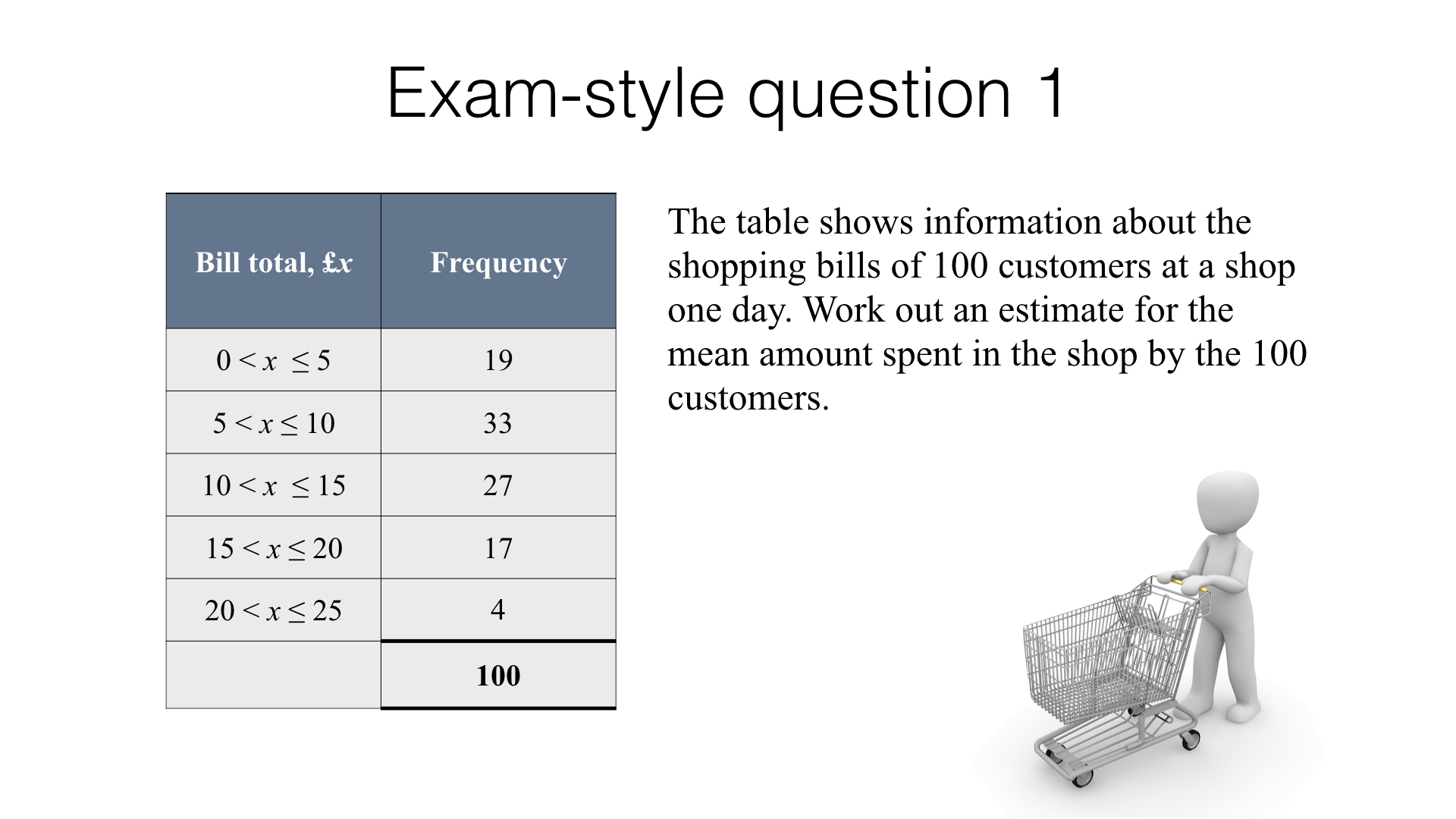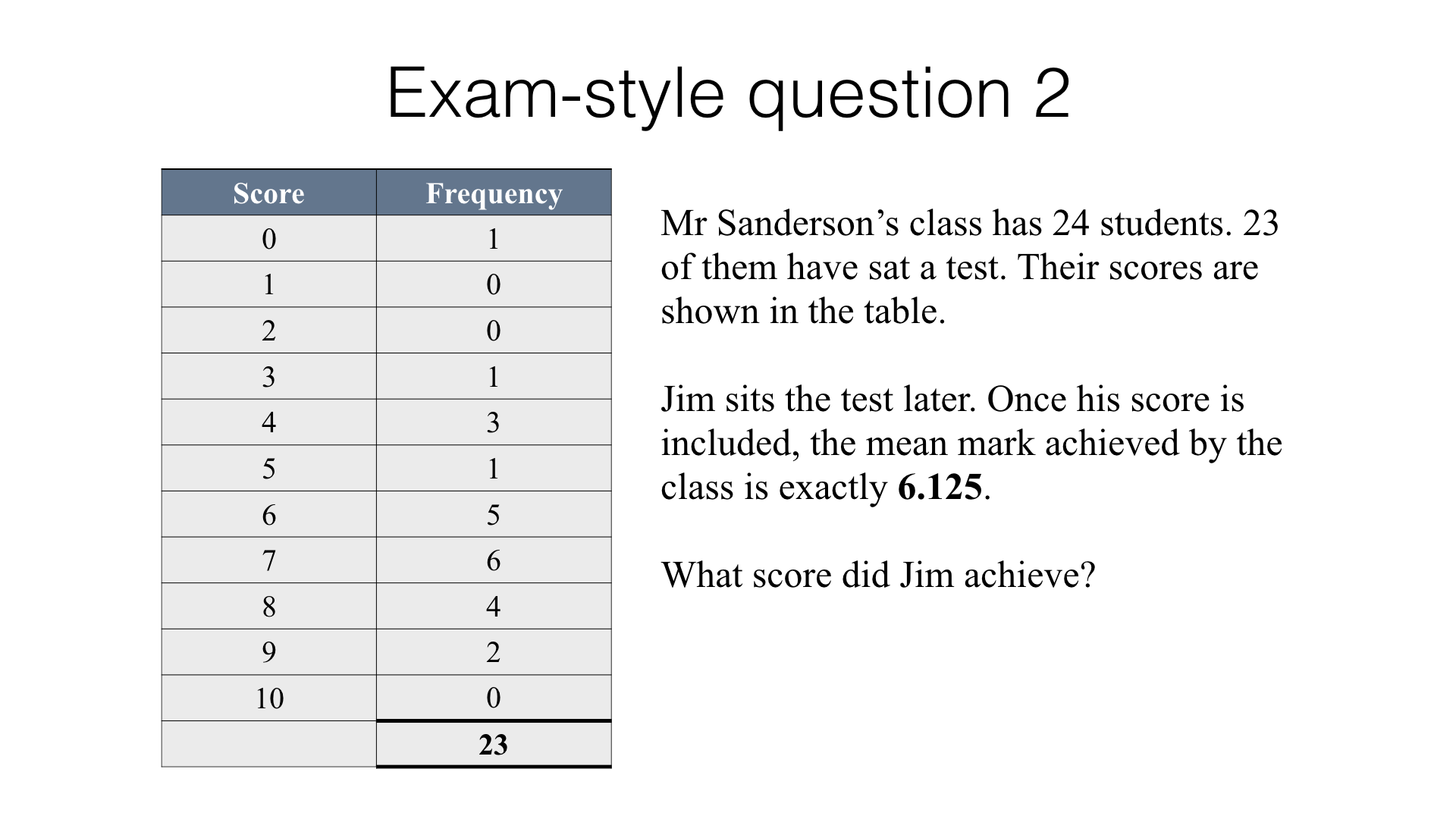This is the students’ version of the page. Log in above for the teachers’ version.
- S2a – Frequency tables (for Part 2 of this lesson)
Part 1 – Finding the mean from a list
Teachers: log in to access these.
Visual representation of the mean
Another visual representation of the mean
- adjust the number of values in the set using the slider;
- adjust each value in the set using the relevant + or – button; and
- click the green button to show the mean and click the pink button to hide the mean.
Consider these questions:
- What is the mean of this set of values?
- If you add 1 to one of the values, what will happen to the mean?
- If you subtract 1 from one of the values, what will happen to the mean?
- What do you have to add to any one of the values to increase the mean of the set by 1?
- If you add 1 to all of the values what happens to the mean?
- If you double all of the values, what happens to the mean?
- You want to include an extra value in the list. What does it have to be in order to leave the mean unchanged?
Working with the mean with minimal calculation
In this activity, students cannot work out the mean length of any of the sets of pencils, because no lengths are given. They should however, be able to to answer the questions posed. In the first case, it should be evident that the mean length of pencil is greater in set A than set B, since both have the same number of pencils but those in set A have a greater total length.
In the second question, you could position the strip of paper in line with the pencils in set D, and determine how the total length of the two pencils and paper compares to the four pencils in set C.
In the third question, the strip of paper could be folded into quarters (by folding in half and then half again). It could then be unfolded partially so that it is three-quarters of the length of the pencils in set E. This can then be compared with the total length of the pencils in set F.
Larger sets of data
Suppose we want to find the mean score achieved by a large number of contestants on a game show. It would be tedious to add up all the scores. Could we calculate the mean more efficiently if the data were presented in a different way?
Part 2 – Mean from a frequency table
Teachers: log in to access these.
Cross-curricular link: waste management

At the point of final treatment, the total waste generated in the UK in 2016 weighed 214.3 million tonnes.
This figure is from the UK government.
- Based on an approximate population of 65 million, what is the mean mass of waste produced by each person? Does this figure seem unexpectedly high or low? Why might this be?
Teachers: log in to view this content.

